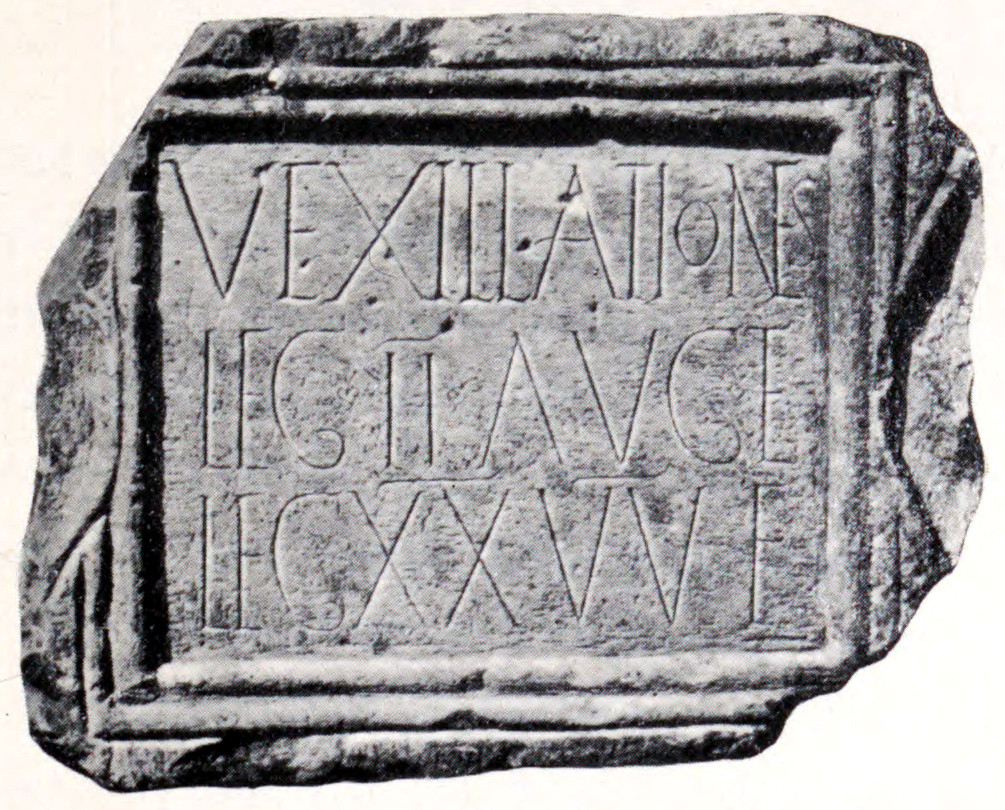Bar Hill Fort on:
[Wikipedia]
[Google]
[Amazon]


 Bar Hill Fort was a
Bar Hill Fort was a
File:Bar Hill Fort 20090619 headquarters.jpg, principia (headquarters)
File:Bar Hill Fort 20090619 well in courtyard.jpg, well in courtyard
File:Bar Hill Fort 20090619 bath house from east.jpg, bath house from east
File:Bar Hill Fort 20090619 laconicum.jpg,



 Bar Hill Fort was a
Bar Hill Fort was a Roman fort
''Castra'' () is a Latin term used during the Roman Republic and Roman Empire for a military 'camp', and ''castrum'' () for a 'fort'. Either could refer to a building or plot of land, used as a fortified military base.. Included is a discuss ...
on the Antonine Wall
The Antonine Wall () was a turf fortification on stone foundations, built by the Romans across what is now the Central Belt of Scotland, between the Firth of Clyde and the Firth of Forth. Built some twenty years after Hadrian's Wall to the south ...
in Scotland
Scotland is a Countries of the United Kingdom, country that is part of the United Kingdom. It contains nearly one-third of the United Kingdom's land area, consisting of the northern part of the island of Great Britain and more than 790 adjac ...
. It was built around the year 142 CE. Older maps and documents sometimes spell the name as Barr Hill. A computer generated fly around for the site has been produced. Lidar
Lidar (, also LIDAR, an acronym of "light detection and ranging" or "laser imaging, detection, and ranging") is a method for determining ranging, ranges by targeting an object or a surface with a laser and measuring the time for the reflected li ...
scans have been done along the length of the wall including Bar Hill. Sir George Macdonald wrote about the excavation of the site. Many other artefacts have also been found at Shirva, about a mile away on the other side of Twechar
Twechar is a small former Pit village, mining village historically in Dunbartonshire and administered by the council area of East Dunbartonshire, Scotland close to the boundary with North Lanarkshire. It lies between the larger towns of Cumberna ...
.
Many Roman forts along the wall held garrisons of around 500 men. Larger forts like Castlecary
Castlecary () is a small historic village in North Lanarkshire, Scotland, directly adjacent to the border with Falkirk Council, Falkirk. It has long been associated with infrastructure, being adjacent to Red Burn, a bridged river, a Castra, Roma ...
and Birrens had a nominal cohort of 1000 men but probably sheltered women and children as well although the troops were not allowed to marry. There is likely too to have been large communities of civilians around the site.
An altar (RIB 2167) to Silvanus was found in 1895 on Bar Hill. It's thought to have originated from a small shrine outside the fort. The altar is now kept in the Hunterian Museum
The Hunterian is a complex of museums located in and operated by the University of Glasgow in Glasgow, Scotland. It is the oldest museum in Scotland. It covers the Hunterian Museum, the Hunterian Art Gallery, the Mackintosh House, the Zoology M ...
, Glasgow
Glasgow is the Cities of Scotland, most populous city in Scotland, located on the banks of the River Clyde in Strathclyde, west central Scotland. It is the List of cities in the United Kingdom, third-most-populous city in the United Kingdom ...
along with others like the one found at Castlecary
Castlecary () is a small historic village in North Lanarkshire, Scotland, directly adjacent to the border with Falkirk Council, Falkirk. It has long been associated with infrastructure, being adjacent to Red Burn, a bridged river, a Castra, Roma ...
. A 43 foot deep well was discovered at the site. Several item were recovered from the well. It's possible they were dumped there when the site was abandoned. Shoes from men, women and children were found leading to suggestions of family life. Other recovered items include an altar, bones, shells and coins. Structural materials like building columns, wooden beams were found as was part of the pulley of the well. Videos of some reconstructed objects like a barrel, a window. and various columns have been produced as well as one of a bust of Silenus
In Greek mythology, Silenus (; , ) was a companion and tutor to the wine god Dionysus. He is typically older than the satyrs of the Dionysian retinue ('' thiasos''), and sometimes considerably older, in which case he may be referred to as a Pa ...
.
Bar Hill Fort was one of over a dozen forts built along the Antonine Wall from around 140 AD. These follow a short route across Scotland’s central belt
The Central Belt of Scotland is the Demographics of Scotland, area of highest population density within Scotland. Depending on the definition used, it has a population of between 2.4 and 4.2 million (the country's total was around 5.4 million in ...
which was largely followed in the 18th century when constructing the Forth and Clyde canal
The Forth and Clyde Canal is a canal opened in 1790, crossing central Scotland; it provided a route for the seagoing vessels of the day between the Firth of Forth and the Firth of Clyde at the narrowest part of the Scottish Lowlands. This allow ...
. On the south-facing slope of the hill is the headquarters; it is the biggest building that can be seen. The remains of a Roman bathhouse can also be observed.
Gallery
laconicum
The ''laconicum'' (i.e. Spartan, ''sc.'' ''balneum'', "bath") was the dry sweating room of the Roman ''thermae'', sometimes contiguous to the ''caldarium'' or hot room. The name was given to it (Laconia: Sparta) since it was the only form of warm ...

References
{{Authority control Forts of the Antonine Wall Archaeological sites in East Dunbartonshire Scheduled monuments in East Dunbartonshire Historic Environment Scotland properties in East Dunbartonshire Roman auxiliary forts in Scotland